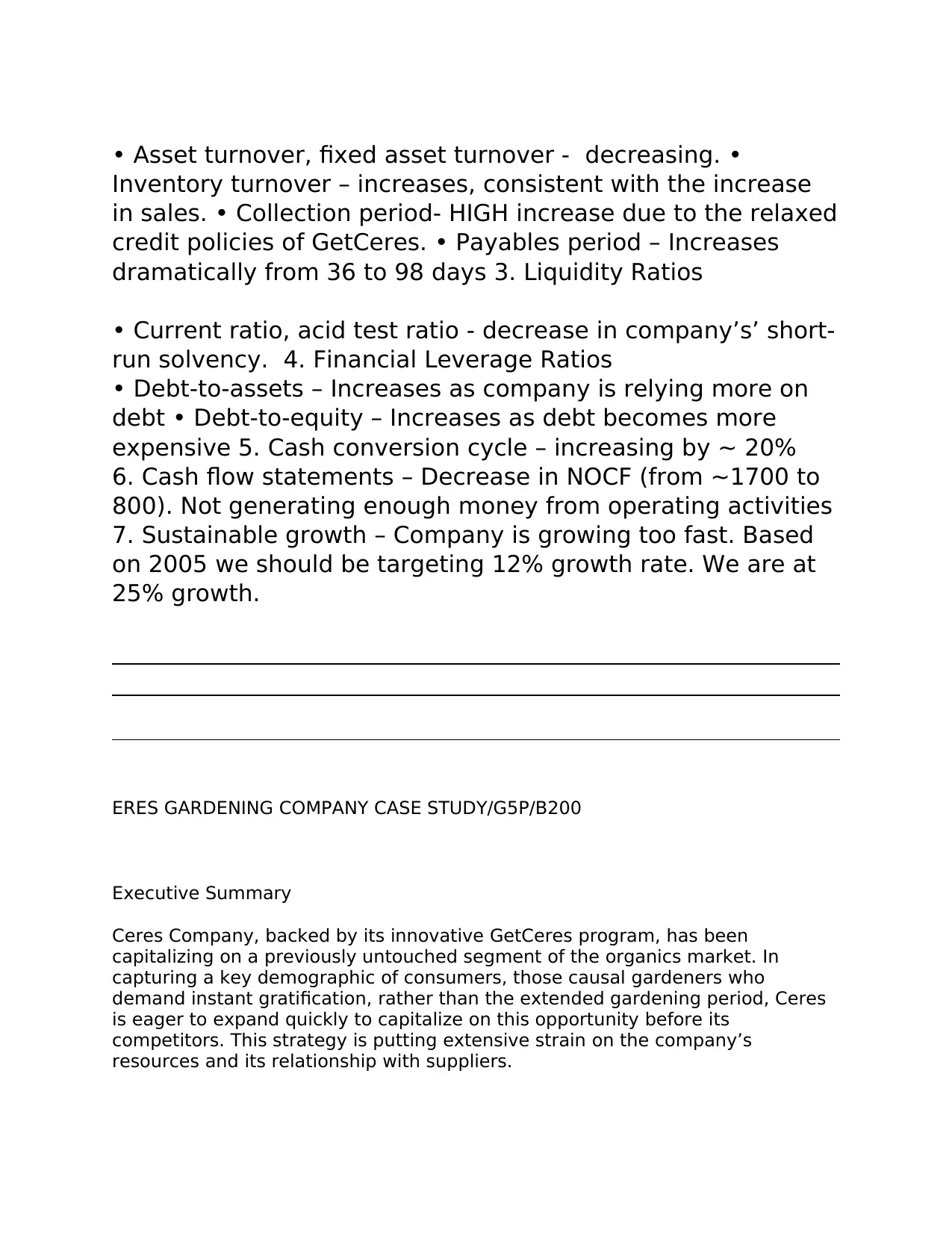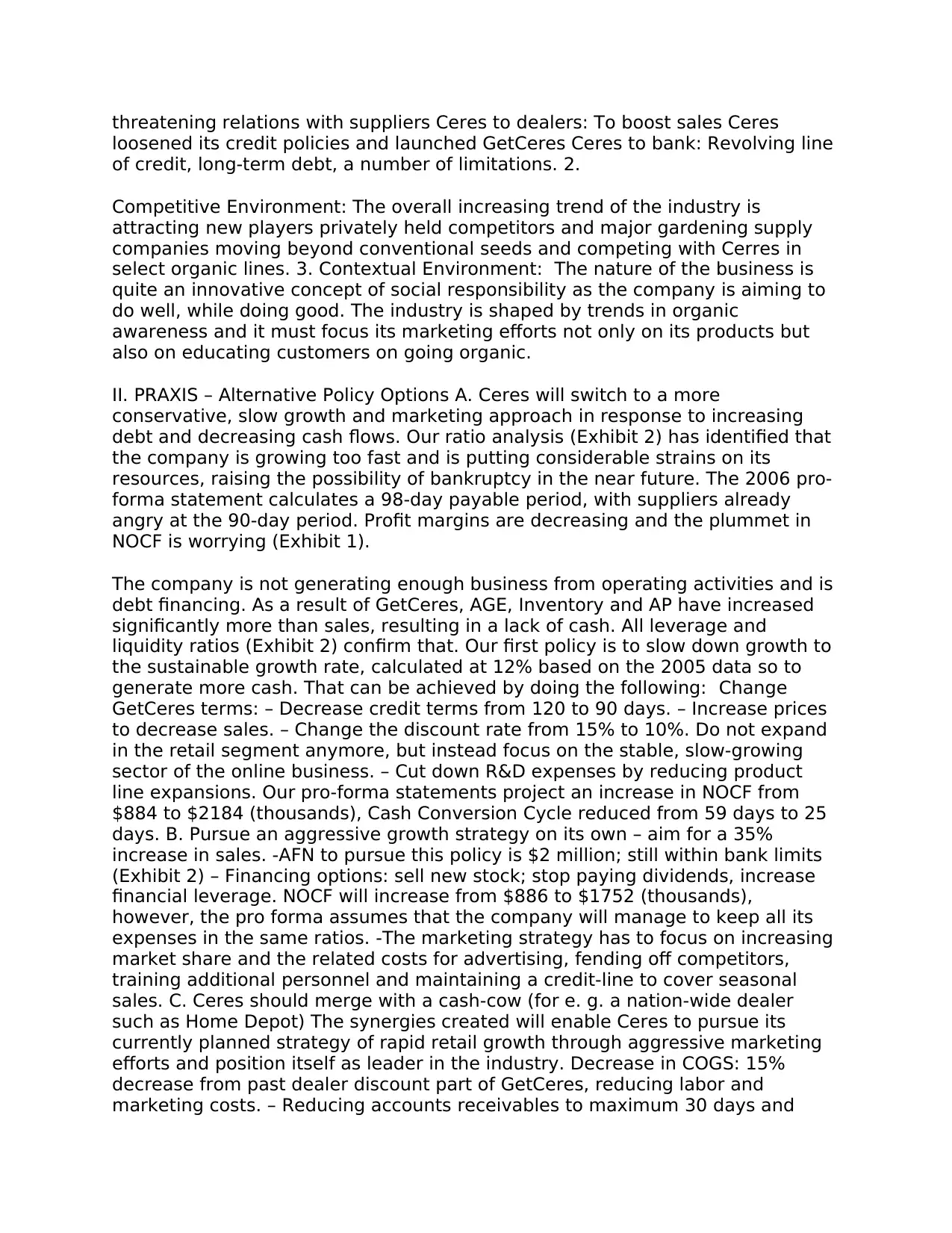Ceres Company, backed by its innovative GetCeres program, has been capitalizing on a previously untouched segment of the organics market. In capturing a key demographic of consumers, those causal gardeners who demand instant gratification, rather than the extended gardening period, Ceres is eager to expand quickly to capitalize on this opportunity before its competitors. This strategy is putting extensive strain on the company’s resources and its relationship with suppliers. Our team has identified three options for Ceres as it looks to move forward. Option A is to reduce growth to its desired sustainable growth rate by changing some key policies of the GetCeres program, primarily price, credit terms, and discount rate. Option B pursues the agenda of the CEO, who hopes to implement a plan of rapid growth by expanding Ceres’ retailing network. Option C suggests merging with a cash-cow company, such as a nation-wide retailer. The synergies created will solve the distribution problems and increase market share. Our team suggests that Ceres should follow Option C and merge with a cash-cow company. This plan would follow a dual purpose: enable Ceres to make the most out of the industry trends and grow without risking bankruptcy.
![[object Object]](/_next/static/media/star-bottom.7253800d.svg)
![[object Object]](/_next/static/media/star-bottom.7253800d.svg)





